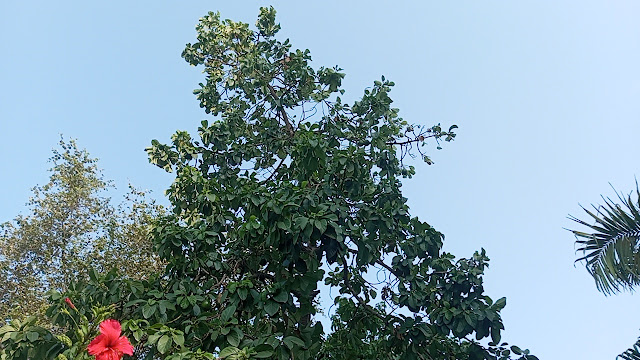Avocado trees can reach great heights and these tall, evergreen fruit trees are best known for their creamy fruits with abundant health benefits.
Good morning my family!
Today we are going to talk about the avocado tree, the fruit and its benefits.
I'm Sofonie Dala, I'm the manager of this project, welcome to our Afronutri channel.
Avocado is a very good fruit and is one of the most preferred by Angolans. It can be consumed naturally. Angolans usually eat it with bread accompanied by tea or quissangua (Angolan traditional drink).
Not everyone has an avocado tree in their home, we usually buy avocados in the market.
Today we are going to show the tree so people can know where the avocado comes from. Normally the avocado tree can take 3 years to start producing fruit, which is very beneficial for the skin and hair hydration.
Avocados have many health benefits. Avocado stick helps treat wounds and inflammations, diarrhea etc.
Here we have an avocado that fell to the ground, very beautiful and full of vitamins.
This tree helps fight diarrhea, anemia, gases, fights aging, varicose veins, cancer, moisturizes the skin and gives shine to the hair.
Harvesting Avocados
It's satisfying to harvest homegrown avocados since it takes a long time for an avocado tree to bear fruit. For nursery-bought trees, you can expect to see fruit in three to four years. For avocados started from seed, it may take five to 13 years before fruits appear.
Nutritious, versatile, and delicious, avocados have become a kitchen staple in many homes around the world. Avocados are extremely popular in the health and wellness world because they’re highly nutritious and have been linked to several health benefits.
The large, slightly leathery, glossy leaves make quite an impression. It is also exciting to watch the germination process – going from just the avocado seed to the first leaves and finally arriving at a beautiful houseplant.
Avocados can be dangerous for animals as all parts of an avocado plant contain the poisonous substance persin. If eaten in large amounts, this can cause damage to the heart muscle of cats and dogs. The persin concentration is particularly high in the skin and the leaves. Therefore, avocados are poisonous to animals and should not be fed to them. For us humans, avocados are healthy as long as you only eat the avocado flesh.
Which types of avocado are there?
There are over 400 avocado varieties which differ mainly in terms of fruit, meaning they may be different in shape, colour or fat content. The varieties were created by crossing three avocado types from Mexico, the West Indies and Guatemala. Here are some well-known types of avocado:
‘Hass’: Most popular type; the ‘Hass’ avocado has black, rough skin
‘Fuerte’: Also often available at the supermarket; has green, smooth skin
‘Avocadito’: Also known as cocktail avocado; has no stone and is only about the size and thickness of a finger
‘Nabal’: Green and round
‘Edranol’: The shape of a pear, small stone and smooth, green skin









Comments
Post a Comment